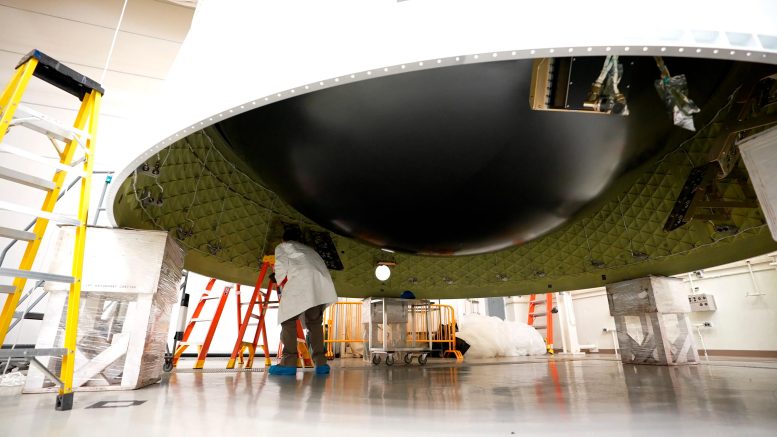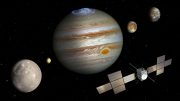
NASA’s Artemis II mission is advancing with the final preparations of the SLS rocket at Kennedy Space Center. The Orion stage adapter, a key component connecting Orion to the SLS, recently underwent a critical installation of its diaphragm at Marshall Space Flight Center. This adapter plays a vital role in ensuring safety during launch by preventing hydrogen gas accumulation. Credit: NASA/Sam Lott
NASA’s Artemis II mission progresses with final preparations of the SLS rocket. The Orion stage adapter, essential for connecting Orion to the SLS and ensuring launch safety, has reached a key milestone. The SLS is integral to NASA’s goal of lunar exploration.
The elements of the super-heavy lift SLS (Space Launch System) rocket for NASA’s Artemis II mission are undergoing final preparations before shipment to NASA’s Kennedy Space Center in Florida for stacking and pre-launch activities in 2024.
Orion Stage Adapter
Teams at NASA’s Marshall Space Flight Center in Huntsville, Alabama, recently rotated the Orion stage adapter– a ring structure that connects NASA’s Orion spacecraft to the SLS rocket’s interim cryogenic propulsion stage (ICPS) – in preparation for the installation of its diaphragm. The installation on November 30 marks one of the final steps for the adapter before it is readied for shipment to Kennedy via NASA’s Super Guppy cargo aircraft.
Safety and Functionality of the Diaphragm
“The diaphragm is a composite, dome-shaped structure that isolates the volume above the ICPS from that below Orion,” said Brent Gaddes, lead for the Orion stage adapter, in the Spacecraft/Payload Integration & Evolution Office for the SLS Program at Marshall. “It serves as a barrier between the two, preventing the highly flammable hydrogen gas that could escape the rocket’s propellant tanks from building up beneath the Orion spacecraft and its crew before and during launch.”
Technicians at NASA’s Marshall Space Flight Center in Huntsville, Alabama, recently rotated, or “flipped,” the smallest major element for NASA’s SLS (Space Launch System) rocket to install a critical component on November 30. The five-foot-tall, 1,800-pound Orion stage adapter connects NASA’s Orion spacecraft to the SLS rocket’s interim cryogenic propulsion stage and is fully manufactured at Marshall. The recently installed diaphragm acts as a barrier to prevent gases created during the Artemis II launch from entering the spacecraft. Credit: NASA’s Marshall Space Flight Center
Adapter’s Role in SLS Rocket
At five feet tall and weighing in at 1,800 pounds, the adapter is the smallest major element of the SLS rocket that will produce more than 8.8 million pounds of thrust to launch four Artemis astronauts inside Orion around the Moon. The adapter is fully manufactured by engineering teams at Marshall.
SLS: A Pillar of Deep Space Exploration
NASA is working to land the first woman and first person of color on the Moon under Artemis. SLS is part of NASA’s backbone for deep space exploration, along with Orion and the Gateway in orbit around the Moon, and commercial human landing systems. SLS is the only rocket that can send Orion, astronauts, and supplies to the Moon in a single launch.









Be the first to comment on "NASA’s Engineering Marvel: Preparing the Gateway to the Moon"